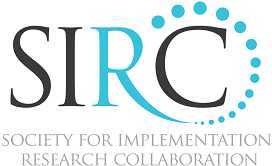Mobile Mental Health Apps are Flooding the Marketplace: Who is Using Them and to What Effect?
Friday 10:30 – 1:45 Breakout A4
Presentor: Diego Castaneda
Diego Castaneda, University of California San Francisco School of Medicine; Patricia Arean, University of Washington; Joaquin Anguera, University of California San Francisco School of Medicine
Objective: Technology offers a clear path for scaling up the dissemination of mental health treatments. As the number of smart phone and/or tablet apps related to mental health wellness steadily increases, our work provides practical insights for clinicians and service providers who continually come into contact with patients who use these technologies.
Methods: A cross sectional Internet based survey (US) targeted mobile device users who reported having and using at least one health app on their smartphone or tablet device.
Findings: Survey results of a representative US sample (N=1536) show that 31% of all health app users reported using at least one mental or emotional health wellness app over the past 30 days. Usability, functionality, and overall satisfaction of these apps were all consistently high across a diverse range of mental health apps with respect to function and desired use (targeted therapy, treatments for anxiety/depression, stress relief, and/or meditation).
Impact: The rapid growth and the surprising diversity of mental/emotional wellness apps makes it clear that self-directed, consumer centered therapies via mobile technology play an increased role in how individuals conceptualize and manage their own mental health. While clinicians and service providers should strive to familiarize themselves with these as adjuncts to traditional services, the flood of these apps presents clear challenges in how clinicians manage patient interaction, expectation, and data management.
Implementing Online Interventions for Mental Health in the Veterans Health Administration
Friday 10:30 – 1:45 Breakout A4
Presentor: Ken Weingardt
Kenneth R. Weingardt, Veterans Health Administration; Carolyn J. Greene, Veterans Health Administration
The U.S. Department of Veterans Affairs has created a self-help portal where Veterans and their families can find award winning online courses on topics such as Parenting, Problem Solving, and Anger Management (www.veterantraining.va.gov ). This talk will review lessons learned by the project team in creating and deploying these tools, and in developing and executing a strategic communications plan to promote them nationally. Evaluation activities, including the use of Google Analytics to obtain real time user data, the use of online focus groups to formatively evaluate the programs as they are being developed, and the use of an online market research panel to conduct summative evaluation will be discussed. Finally, the Consolidated Framework for Implementation Research (CFIR) will be used to organize two case studies that demonstrate some of the innovative ways in which VA staff are integrating these new technologies into their clinical practices.
An Efficent Process of Gathering Diverse Community Opinons to Inform an Intervention
Friday 10:30 – 1:45 Breakout A4
Presentor: Nancy Pandhi MD, PhD and Natalie DeCheck
Nancy Pandhi, University of Wisconsin-Madison Department of Family Medicine; Nora Jacobson, University of Wisconsin School of Nursing; Neftali Serrano, Access Community Health Centers; Armando Hernandez, Group Health Cooperative of South Central Wisconsin; Elizabeth Zeidler-Schreiter, Access Community Health Centers; Natalie DeCheck, University of Wisconsin-Madison Department of Family Medicine ; Zaher Karp, University of Wiconsin Department of Family Medicine
Background: Gathering community opinions from a diverse population to inform interventions are highly desirable. Methods that produce quality results while being timely and cost-effective are needed.
Objective: To describe the design, dissemination and results of video vignette survey designed to elicit community perceptions of two models that integrate mental health care into primary care.
Methods: Working with three health systems, scripts depicting models were developed. Practice videos were vetted with various stakeholders including an advisory group drawn from a nontraditional research population. Final videos used local actors and were embedded in a survey disseminated online and in person via tablet computers. Besides socio-demographics, the survey asked three open ended questions about likes, dislikes and desired outcomes.
Results: 381 individuals completed the survey. Thirty percent of surveys were answered online, 43% in clinic waiting rooms, and 27% at community locations. Thirty-five percent of respondents identified as low income, 28% as non-white and 44% as having a mental health diagnosis. Preferences were elicited in four domains: access to care, care experience, future services, and dignity. The process took seven months and non-staff cost was ~$7,000.
Conclusions: Video-vignette surveys are a promising, efficient method for gathering community perspective to inform intervention design.
